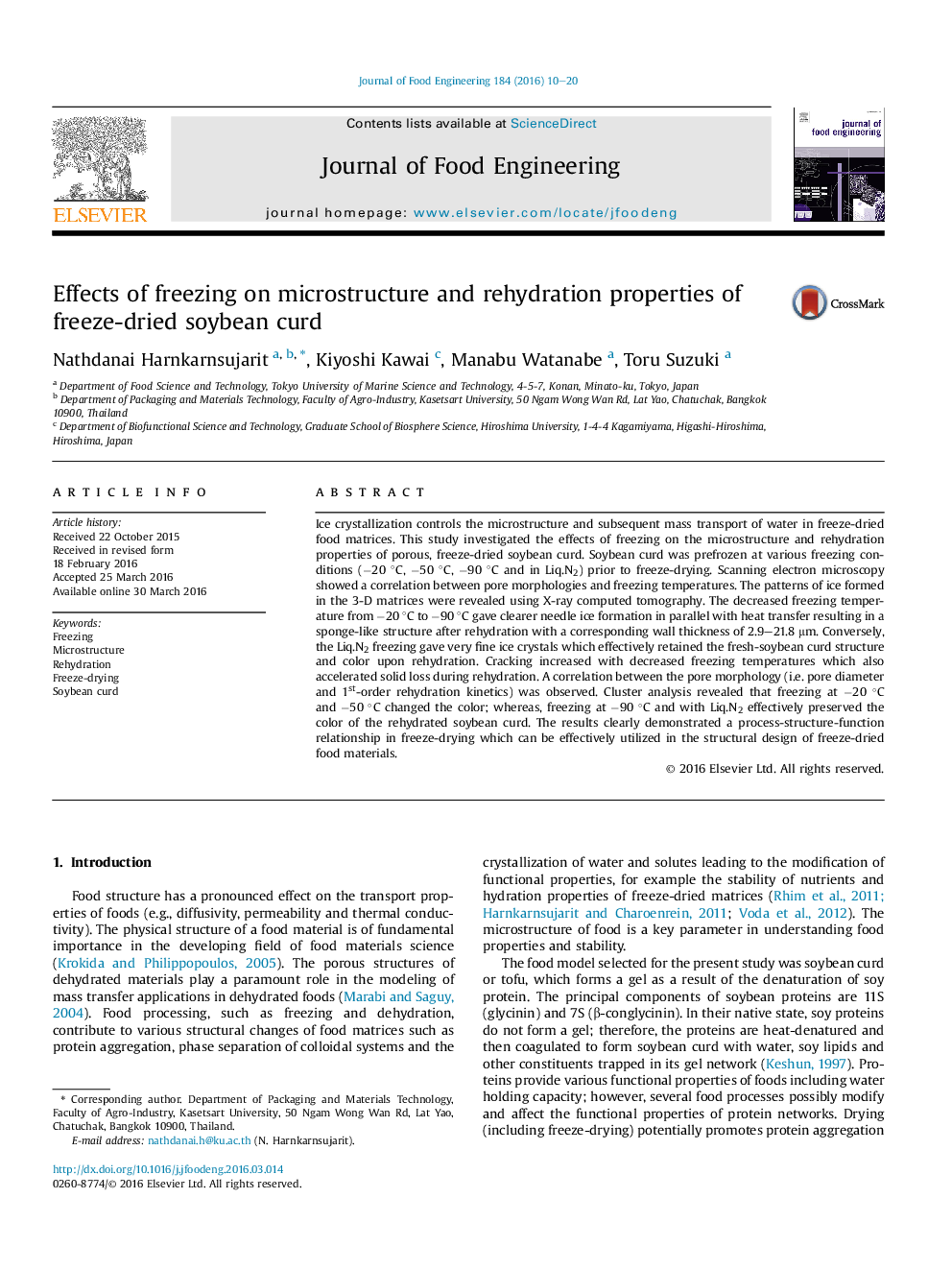| Article ID | Journal | Published Year | Pages | File Type |
|---|---|---|---|---|
| 222611 | Journal of Food Engineering | 2016 | 11 Pages |
•The research shows process-structure-rehydration relationships of freeze-dried tofu.•3-D microstructures of freeze-dried tofu were determined.•Rehydration kinetics and solid loss are clearly controlled by freezing temperatures.•Slow freezing gives sponge structure and modify color of dried and rehydrated tofu.•Fast freezing enhances rehydration capacity but increases solid loss.
Ice crystallization controls the microstructure and subsequent mass transport of water in freeze-dried food matrices. This study investigated the effects of freezing on the microstructure and rehydration properties of porous, freeze-dried soybean curd. Soybean curd was prefrozen at various freezing conditions (−20 °C, −50 °C, −90 °C and in Liq.N2) prior to freeze-drying. Scanning electron microscopy showed a correlation between pore morphologies and freezing temperatures. The patterns of ice formed in the 3-D matrices were revealed using X-ray computed tomography. The decreased freezing temperature from −20 °C to −90 °C gave clearer needle ice formation in parallel with heat transfer resulting in a sponge-like structure after rehydration with a corresponding wall thickness of 2.9–21.8 μm. Conversely, the Liq.N2 freezing gave very fine ice crystals which effectively retained the fresh-soybean curd structure and color upon rehydration. Cracking increased with decreased freezing temperatures which also accelerated solid loss during rehydration. A correlation between the pore morphology (i.e. pore diameter and 1st-order rehydration kinetics) was observed. Cluster analysis revealed that freezing at −20 °C and −50 °C changed the color; whereas, freezing at −90 °C and with Liq.N2 effectively preserved the color of the rehydrated soybean curd. The results clearly demonstrated a process-structure-function relationship in freeze-drying which can be effectively utilized in the structural design of freeze-dried food materials.
